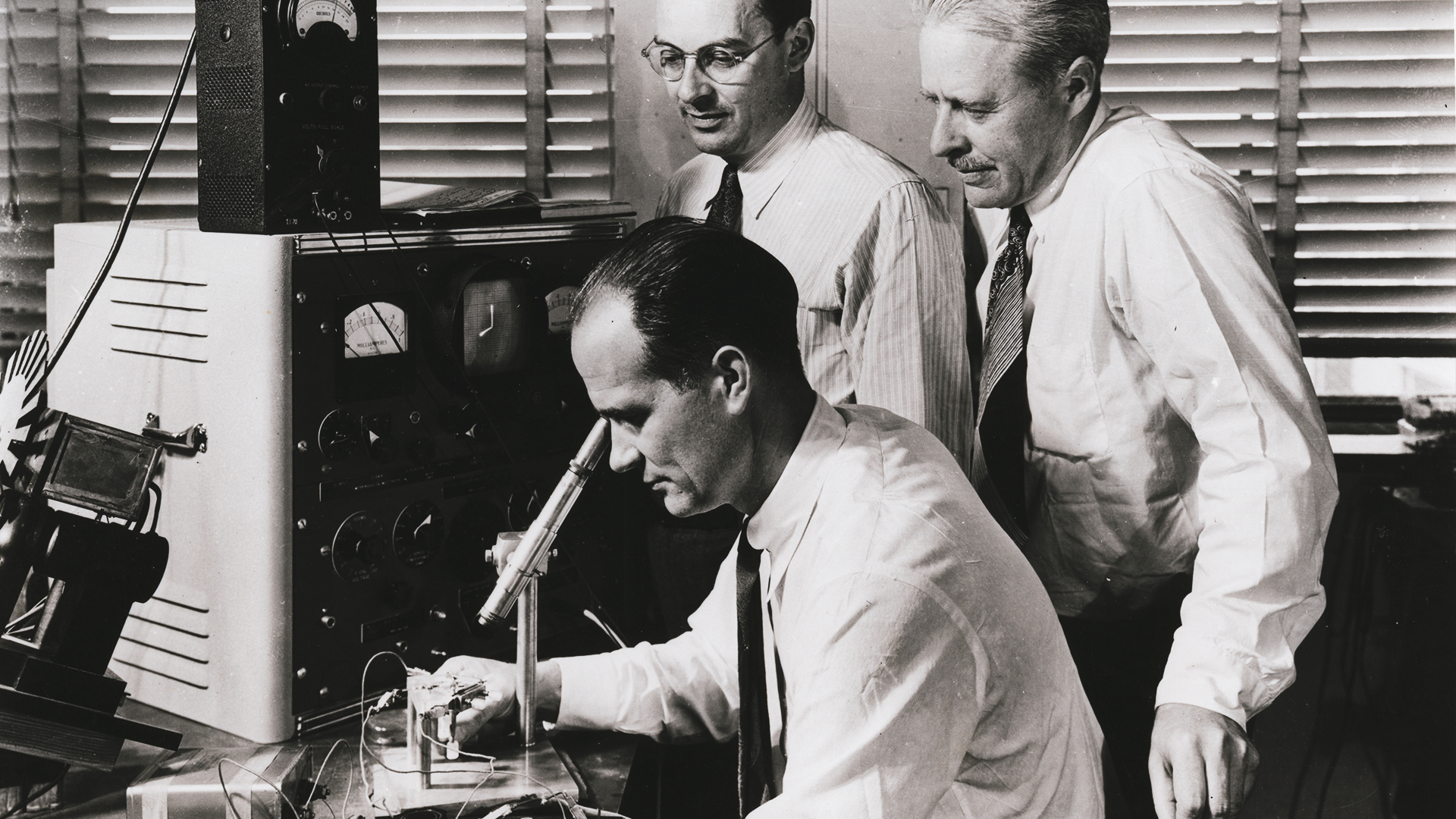
A Brief Timeline of the Transistor, the Most Common Product Ever
07.03.2022
First things first; for anyone not familiar with what exactly a transistor is, they are kind of like miniature on-off switches that allow a computer to process information. Transistors have been in our life since the discovery of the light bulb. They are in our computers, phones, TVs, cars… every device which has an electronic circuit. They made technology more available and accessible to all. Here are some fun facts about these little gadgets.
Vacuum Tubes
Before the discovery of the transistor, scientist used to use the technology called ‘vacuum tubes’. They allowed them to create a new level of electronics, since they have a third electrode allowing electronic on-off switches. The creation and development of the transistor was extremely important, because however useful the vacuum tubes were, they were extremely large and cumbersome, plus they had a short life span and excessive power needs.
Bell Labs
Bell Labs in New Jersey has been the birthplace of many new electronic gadgets throughout the years. In the 1930s, scientists started to develop products known as solid state electronics. These types of electronics would make it possible to develop smaller and more reliable electronics.
The Very First Transistor
The original transistor was invented in December 1947 at Bell Labs by John Bardeen, Walter Brattain, and William Shockley. It had three contact points and was made from Germanium. Unlike today’s counterparts, it was large enough to be pieced together by hand. But this original prototype was quickly outpaced and by 1954, Texas Instruments developed the first transistor made from silicon. However, Bardeen, Brattain, and Shockley still won the Nobel Prize for Chemistry in 1956 for inventing the transistor.
Commercialization
Early transistors were mainly used to amplify audio signals, so it wasn’t surprising that the first commercial device to use a transistor was a hearing aid. They were used in a limited fashion in radios, but they were very sensitive to moisture and wire fragility. In November 1954, the first practically successful transistor radio The Regency TR-1 was released on sale for the general public. It used 4 transistors and a 22.5-volt battery which allowed for 20-30 hours of use. It became hugely commercially successful and 150,000 units were sold. As the development of transistors continued, their range of uses also grew.
A Better Transistor Joins the Game
In 1959, Mohammed Atalla and Dawon Kahng at Bell Labs invented the metal-oxide-semiconductor field effect transistor, or MOSFET for short. It has become the most mass-produced device in history, with an estimated total number of 13 sextillion unit made by 2018. It is also the basis of every microprocessor.
Moore’s Law
Gordon Moore, cofounder of Intel, predicted that the number of transistors on a chip would double about every two years without any price change. This is known as Moore’s Law.
Microchips and personal computers
The first Intel 4004 chip was introduced in 1971; it contained 2,300 transistors. Microchips were the basis for home computers and they led to the era of personal computers. Thanks to transistors, many successful companies were created. Today transistors have shrunk in size by a factor of 222 and the latest Intel computer chip has 820 million transistors in it!
Technological development never stops; who knows what surprises are in store for us in the future! Follow us to learn more about the history of humankind, and don’t forget to follow us on social media.

